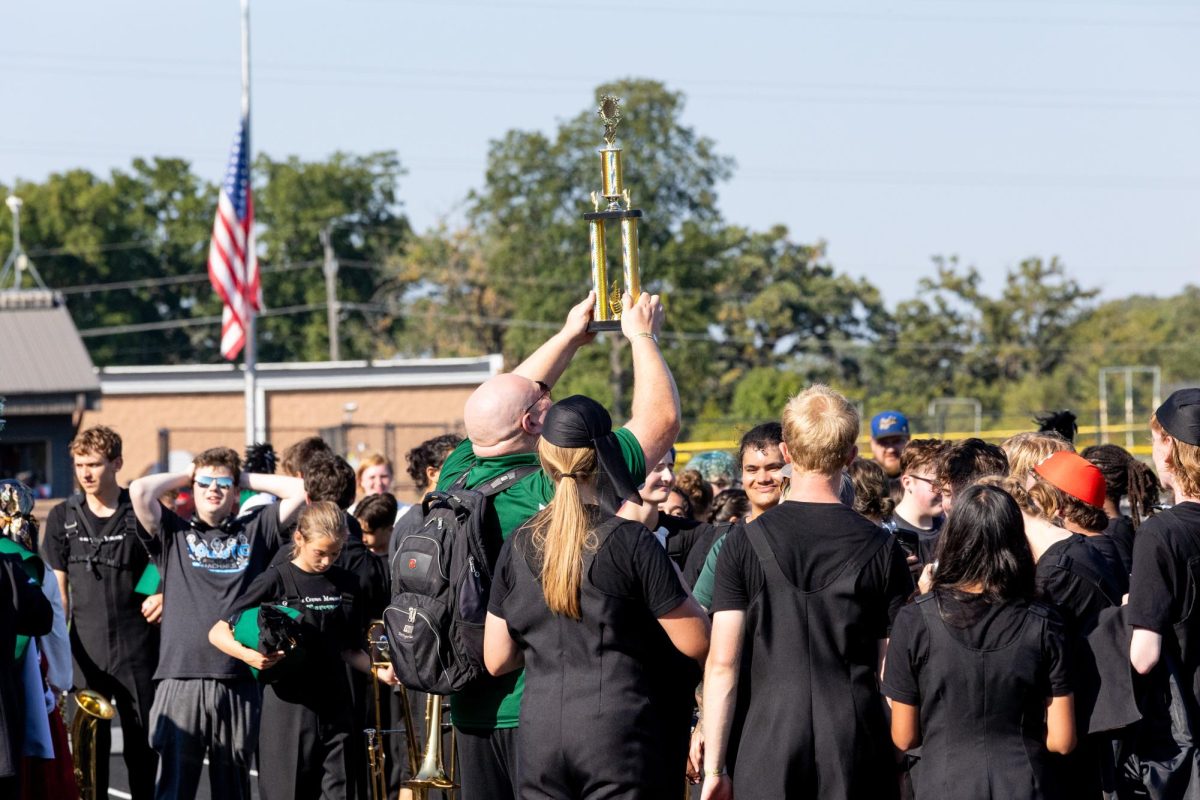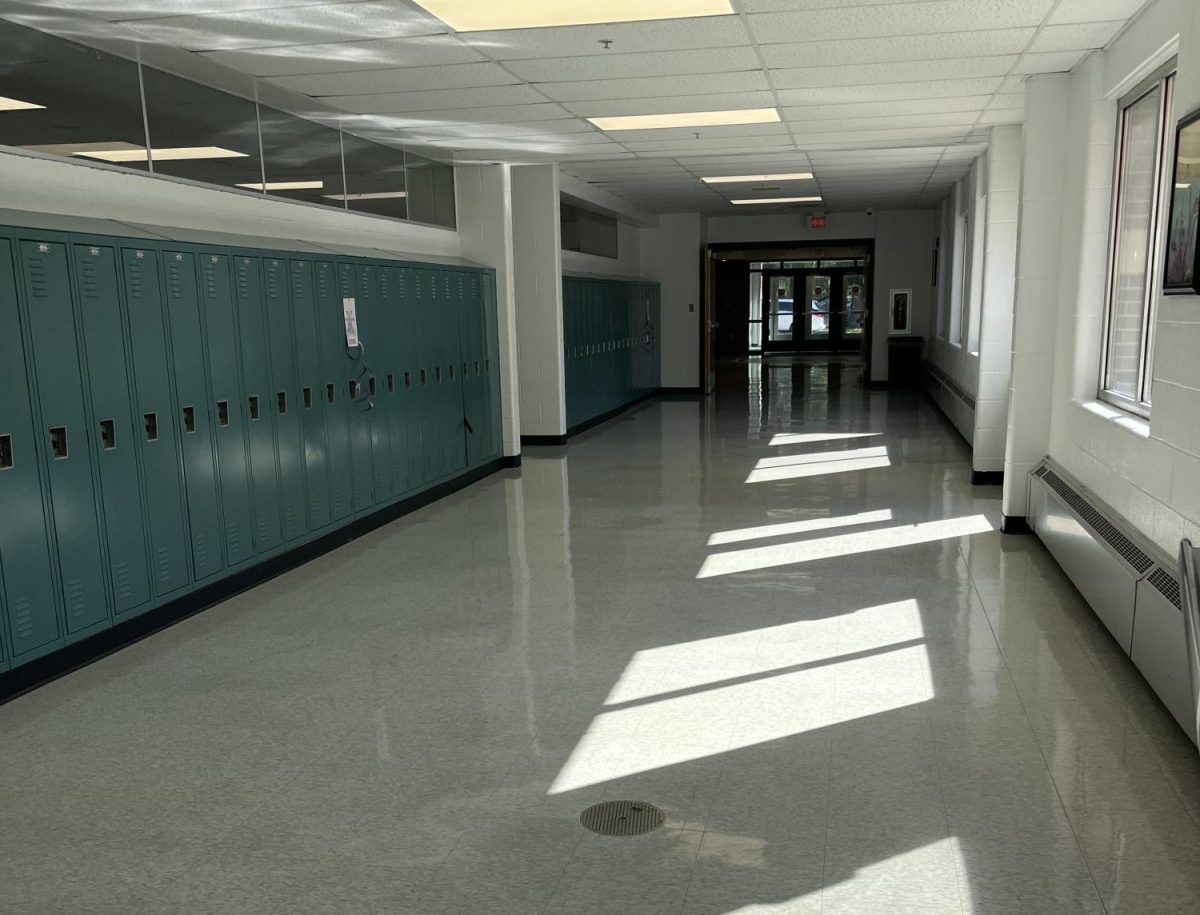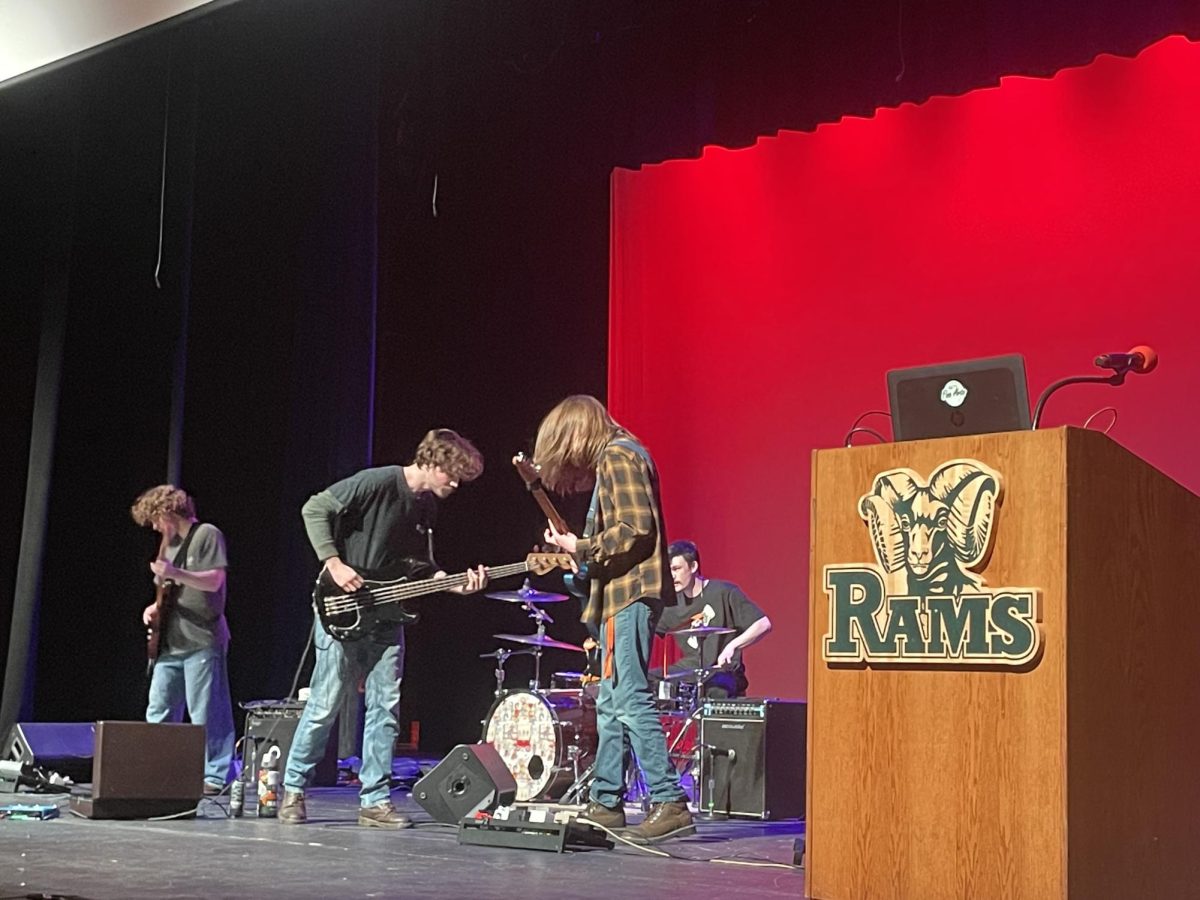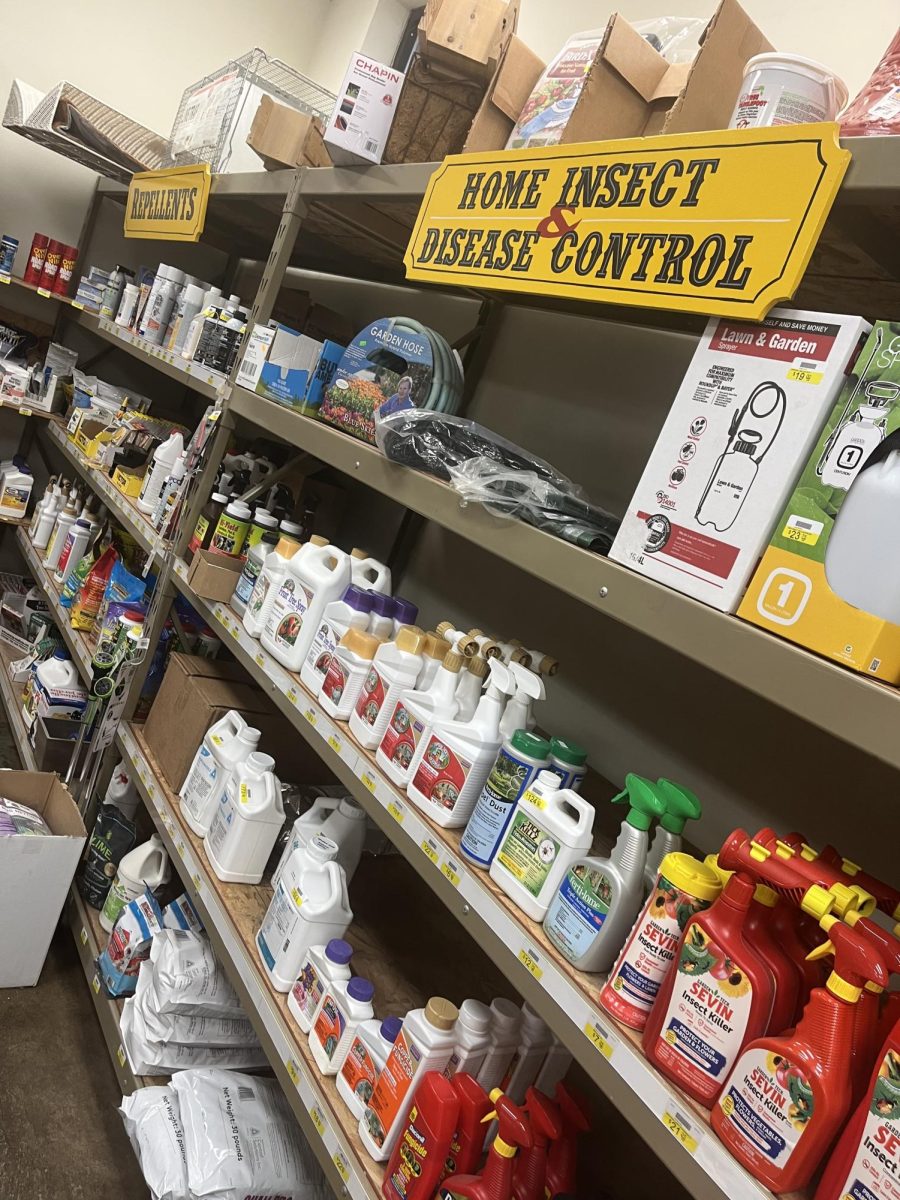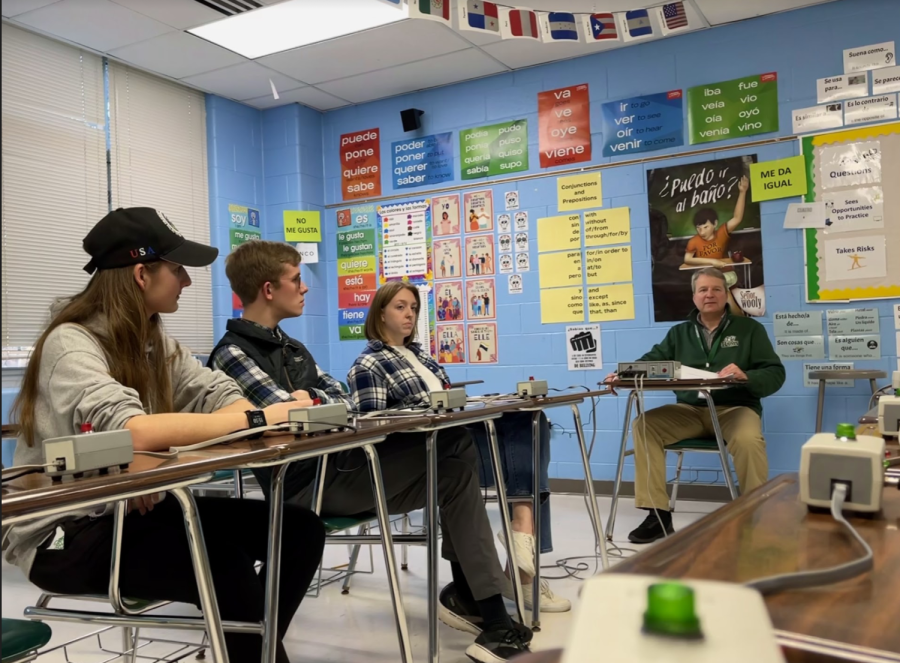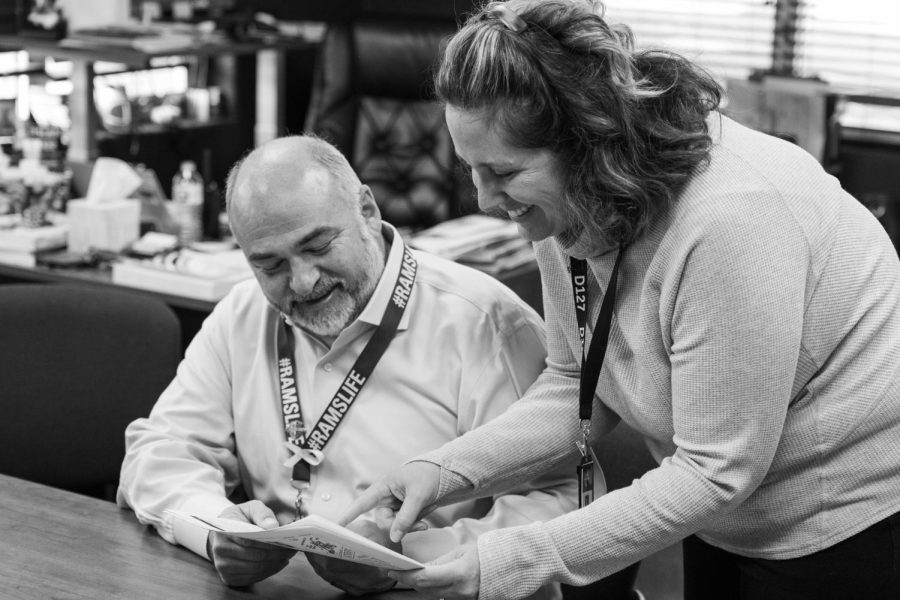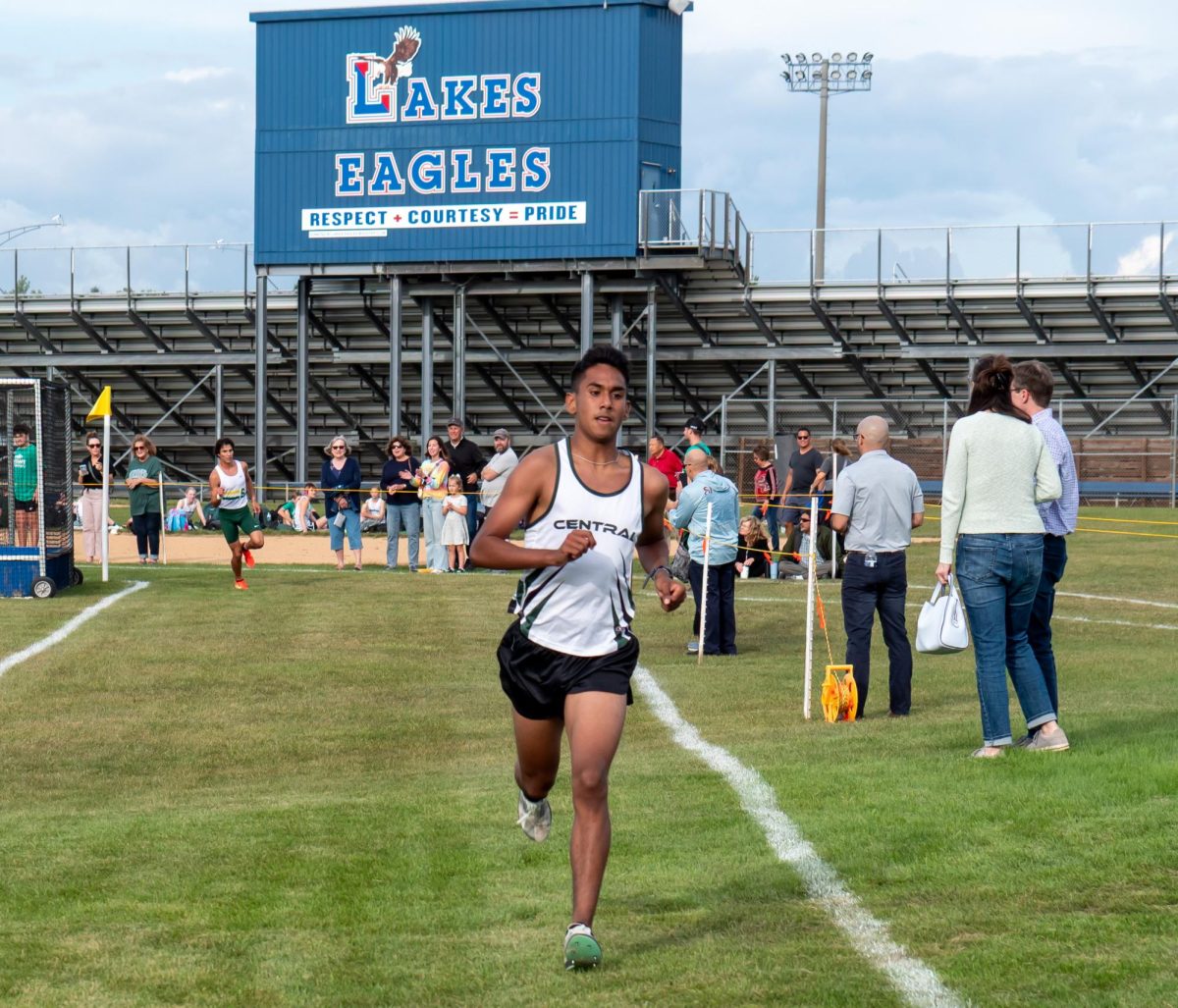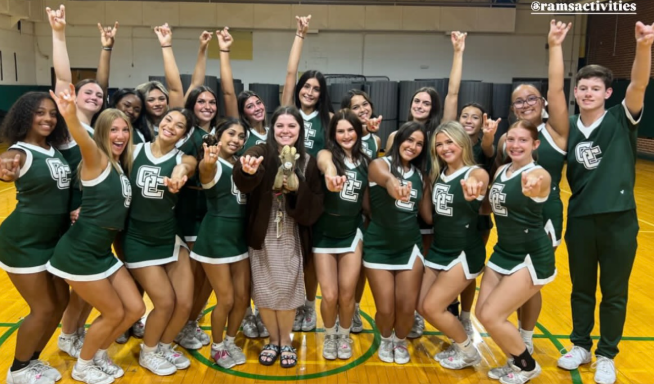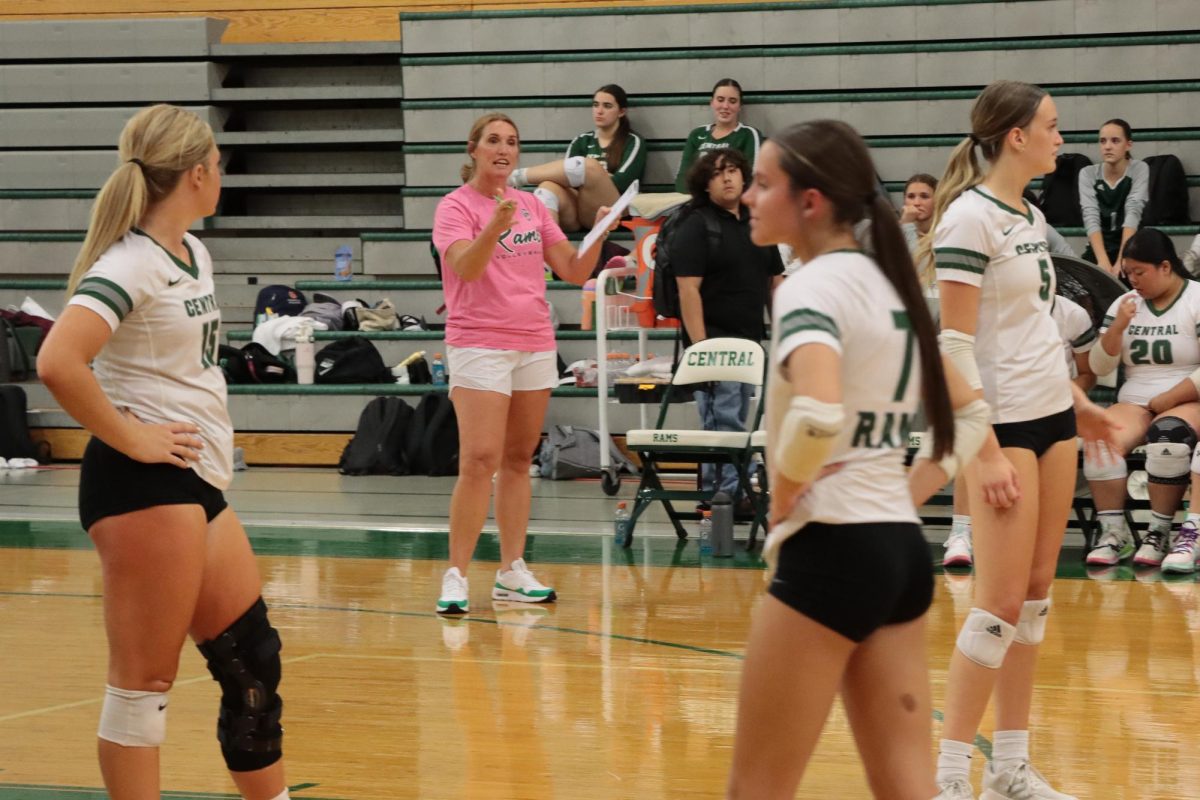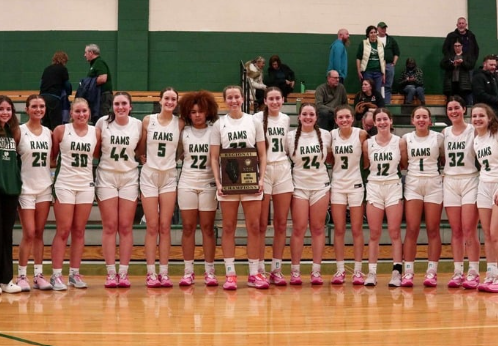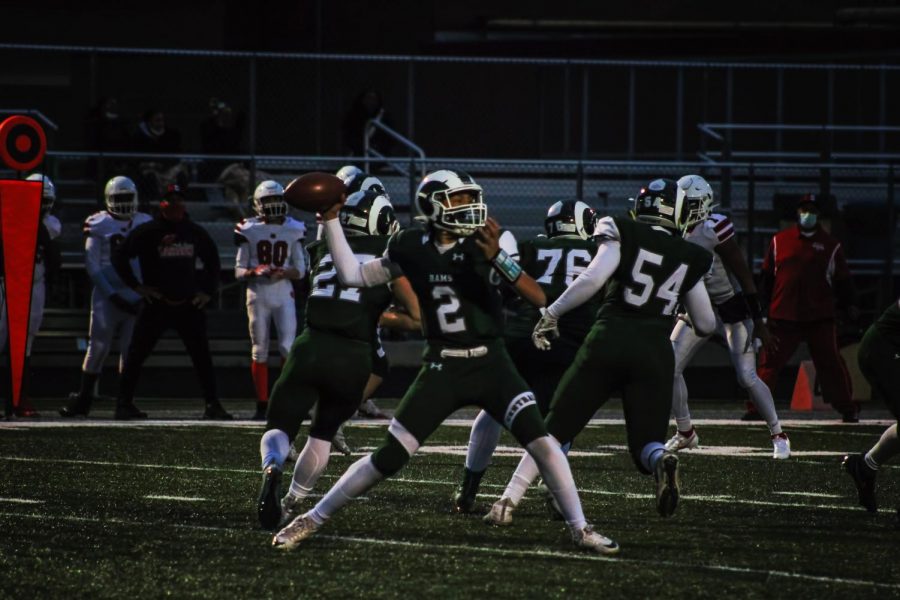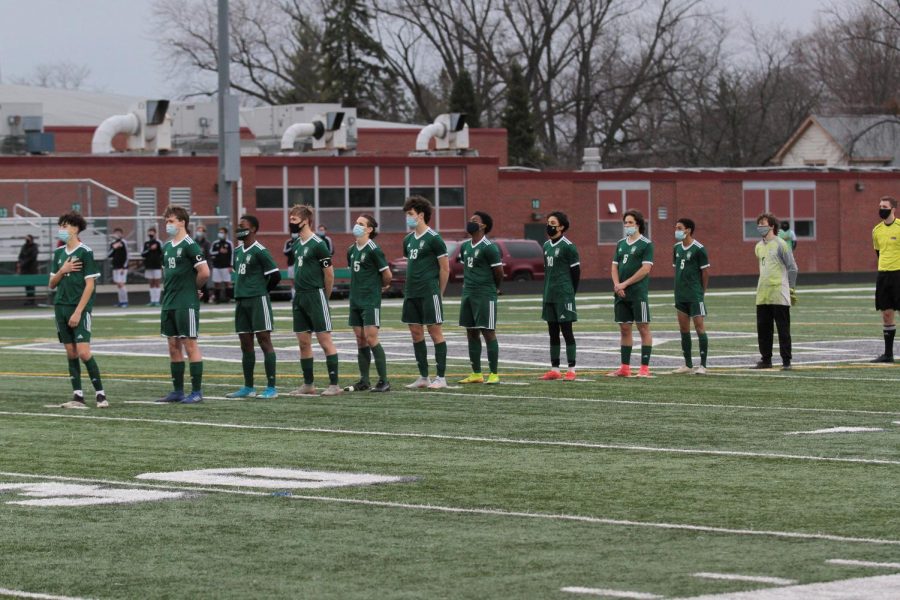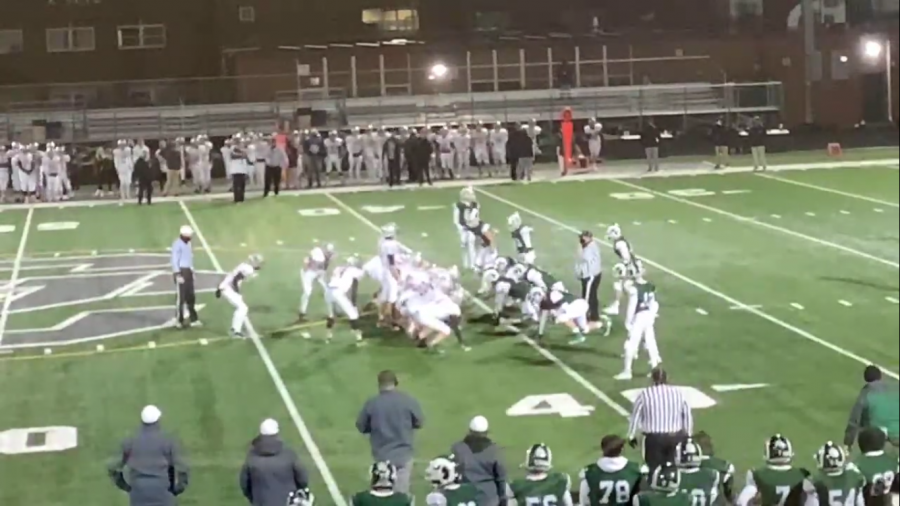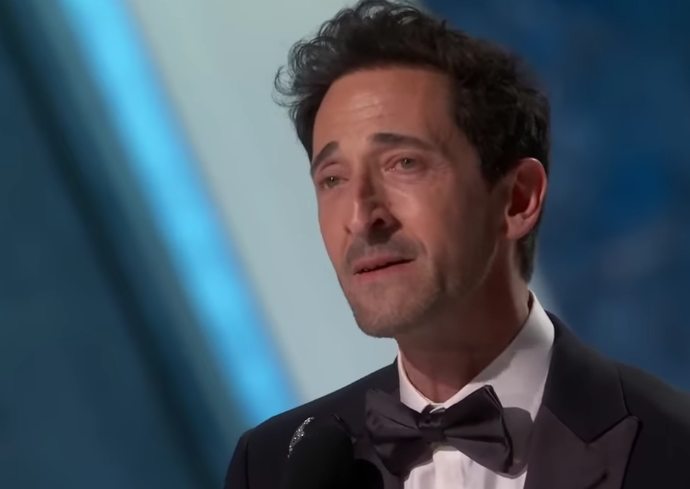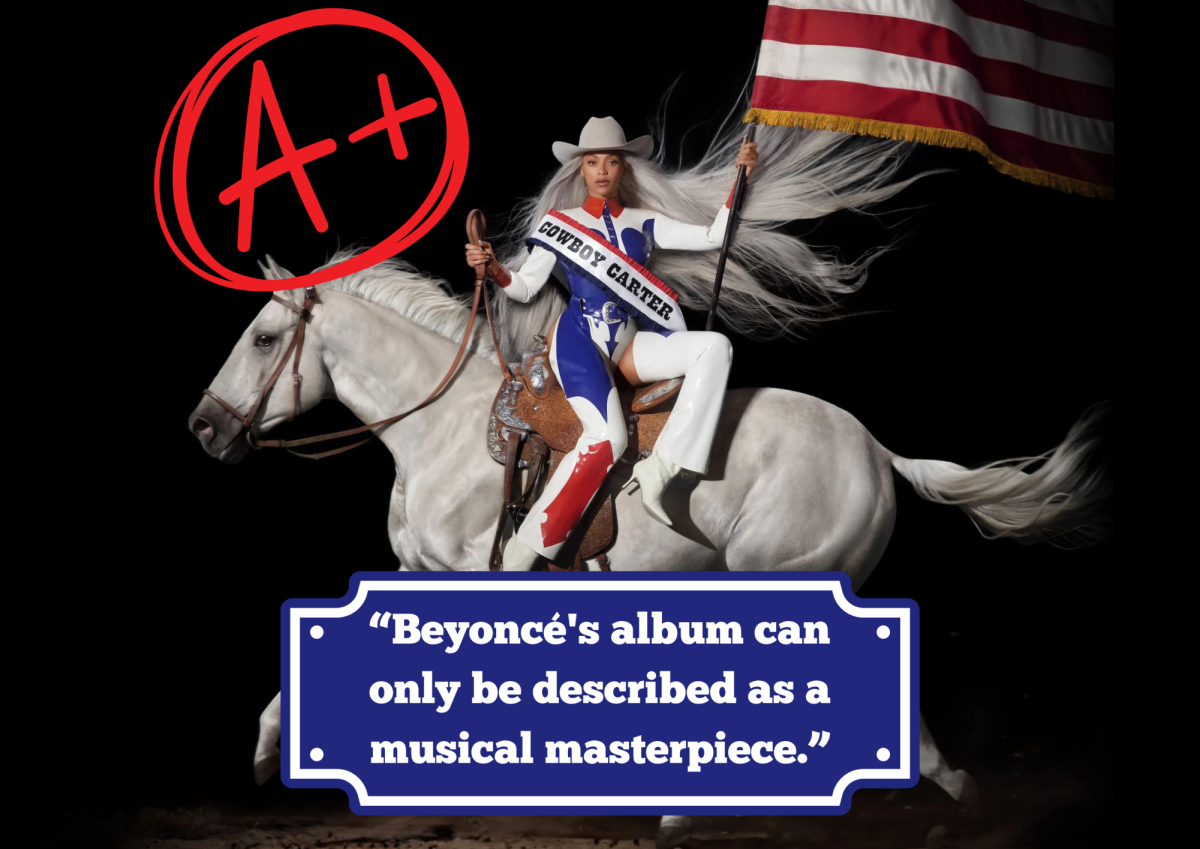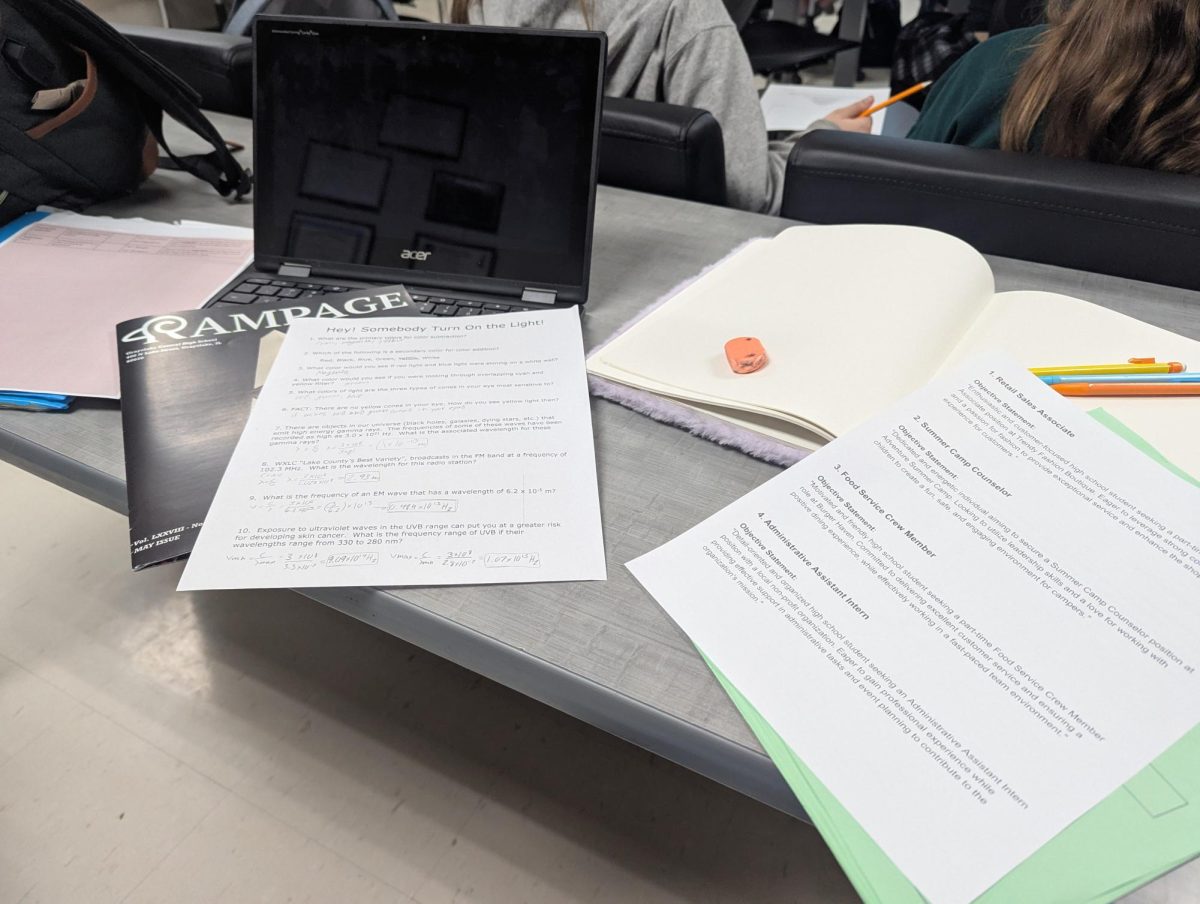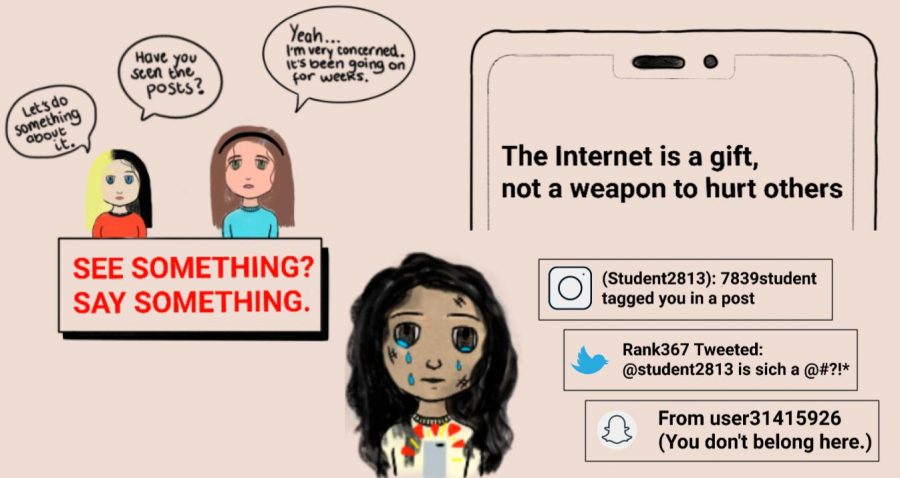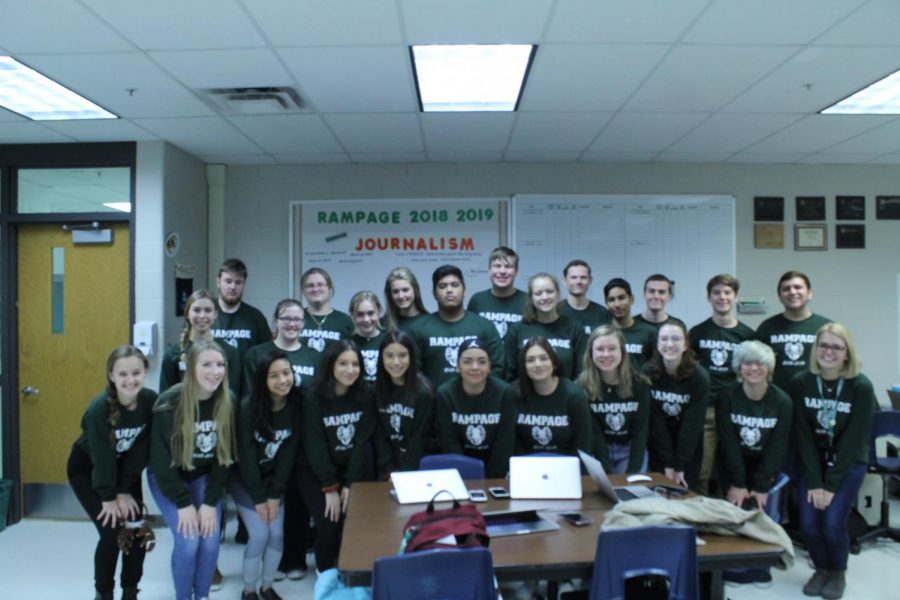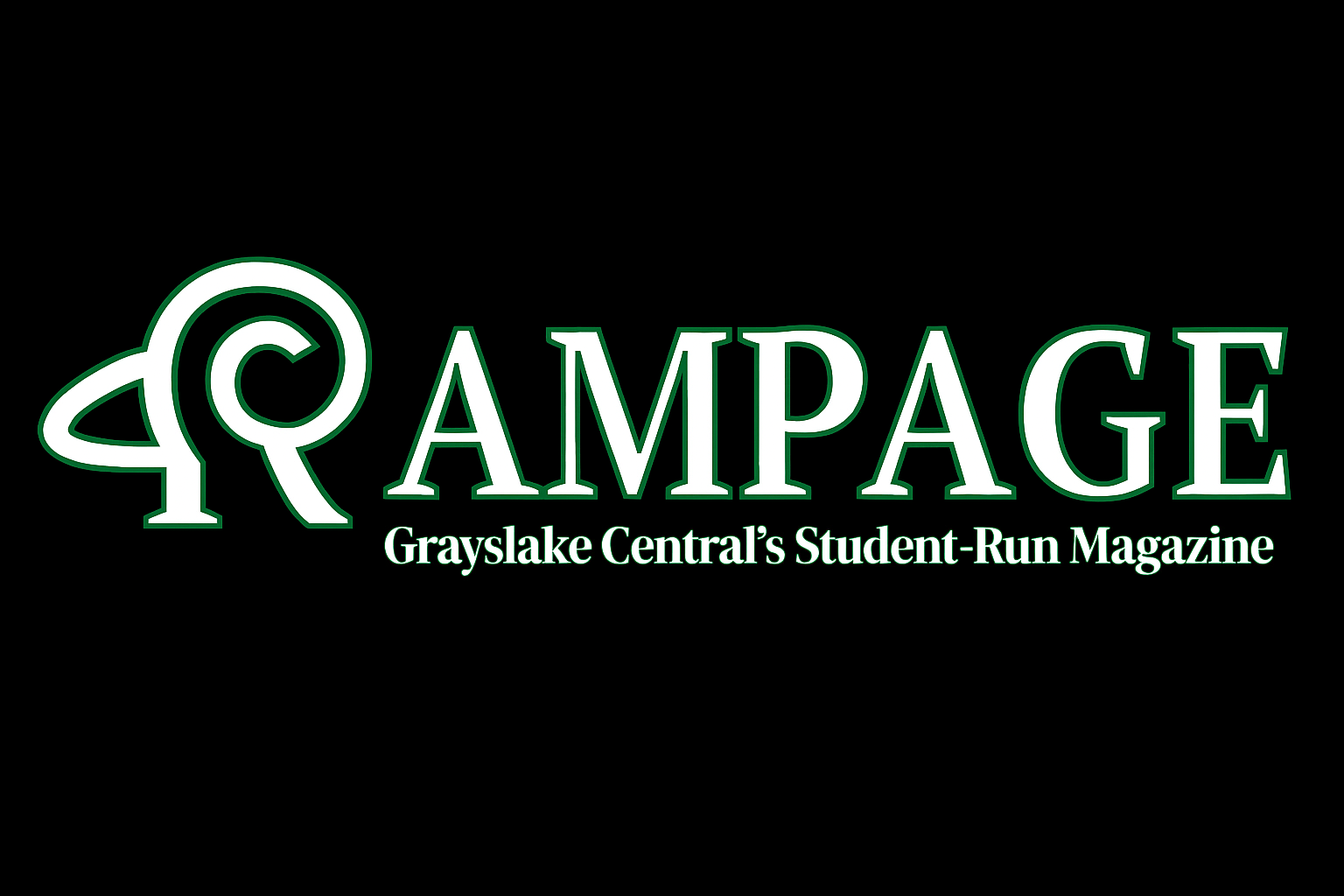Student Zoom cameras mandated to be ‘on’
The lack of cameras being on was negatively affecting students’ academic performance.
Journalism class demonstrates what it looks like to teachers while students are not using video. Photo illustration by Henry Rowe
October 25, 2020
While the COVID-19 pandemic may be keeping us physically apart, conference tools like Zoom are being used to try to keep us connected. Unfortunately for our school’s teachers, these tools were not being used to their fullest potential. Students often logged into a meeting only to be greeted by a sea of black screens and names. In order to curb this growing problem, District 127 made cameras required in Zoom classes to be considered present.
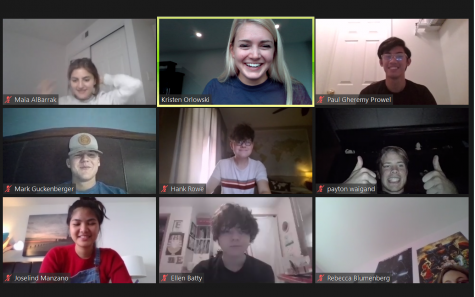
GCHS principal Dan Landry explains, “Our hope at the start of the year was that using cameras would be an everyday thing for our students. What we found was that students more often than not had their cameras off. We’ve really seen less student engagement than we’d like. We have had both students and parents come to us and admit that they log into the meeting, but go on their phone or play video games. We’ve also had some teachers admit that they’ve never seen some of their students.”
The lack of cameras being on was negatively affecting students’ academic performance. Landry hopes this rule will improve student engagement in class.
“One of the things we’ve noticed is that overall academic performance at this time is lower than it normally is. We have more Cs, Ds and Fs than we normally do at this time of year. It’s clear that student performance is being hampered. Another thing that we know is that when students are engaged they do better… this is one of the main reasons we made this change,” said Landry.
All of GCHS staff are aware that there are more reasons students would have their videos off. One of the problems facing students is trouble with the technology that is so vital for getting to class. Staff members have taken this into account with the new policy.
“We understand that students have had trouble with video. Oftentimes when you have both your video and audio on, it starts to freeze. This has even happened to me when I’m working. So if students are running into this problem, we encourage talking to their teachers and sort of say ‘hey, my video isn’t working, can I turn it off in your class?’ Then we put a marker in PowerSchool that lets you know it’s ok to have your video off in class,” said Landry.
Esther Cho, who teaches English at GCHS, experienced this problem first hand with cameras being off to start the year.
“What we really lost when we moved to remote learning is the aspect of community in the classroom. That natural banter amongst students that we had in the classroom–where it’s hustle and bustle and the side conversations. We were talking as a class. And more than anything, I can see how you’re doing, you know, teachers can get cues and notice. Okay, it seems so and so seems a little bit down today and I make sure that I go check in on them, knowing how they’re doing is a major part of teaching. It is being in tune with your students,” said Cho.
Cho’s English classes in particular were affected.
“I think that being in an English course, especially when we’re talking about the things that we’re reading together, and also when we talk about some more mature topics, I would like to see [or] at least get nonverbal cues of how people are feeling… There are some uncomfortable things that we have to talk about within Lord of the Flies. Some of them are darker themes. “ said Cho.
Cho also teaches speech classes to GCHS students. Teaching a class where student input is so important can be difficult over a computer, especially when videos are off.
“In our speech class, the focus is how to tackle speaking anxiety and how to feel more comfortable speaking. Unfortunately, that’s one of the biggest issues I noticed in my speech classes. You can practice everything else, you can practice your eye contact, you can practice your writing. But that’s usually the thing that stops you from actually being able to perform to the level of which you are happy about: It’s your anxiety and your fears. So, I share with my speech class how important it is for us to see each other in person. The next best thing [is] turning on our cameras, practicing speaking through a webcam, even as weird as that is. I told them like, Hey, I got a job via Zoom.” Said Cho.
Sophomore Kalani Yah is a student in Cho’s sophomore English honors class, and even before the new rule, Yah saw why teachers stressed the importance of using video in class, due to family members being teachers.
“My mom is a teacher, so she made it very clear to me that I had to keep my video on for the sake of the teachers. She has said that it creates a wholly different environment. If she’s teaching a lesson, it’s really hard to make sure the information is clicking in the minds of her students through their facial expressions,” said Yah.
While this new rule will take some getting used to, Landry reports that students both love and loathe the new camera rule. Landry is aware of the split feeling that our student body has about mandatory Zoom cameras, but he is still hopeful.
“I heard from ten to fifteen students yesterday, with a 50/50 split of ‘this is great, I wanted to see my classmates’ and ‘why are you doing this, it’s so much worse.’ And to the latter I say, if it’s really that bad, please talk to your teacher, talk to your counselor and they can work to help you with the problems you’re having,” said Landry.

